Wildflowers, Grasses and Other Nonwoody Plants
Media
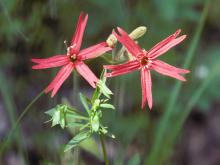
Species Types
Scientific Name
Silene virginica
Description
Fire pink is a low, clump-forming perennial with many slender, spreading stems that are sticky from glandular hairs, with open clusters of bright red flowers. This showy native Missouri plant is growing in popularity among home gardeners.
Media
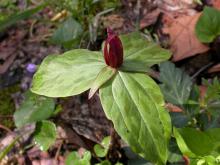
Species Types
Scientific Name
Trillium sessile
Description
The flower of wake robin, or trillium, has 3 petals and 3 sepals, and 3 leaves that subtend the solitary flower. The petal color varies in this common woodland spring wildflower, but it is most commonly brownish or maroon.
Media

Species Types
Scientific Name
Krigia biflora
Description
There are several members of the aster family that look something like common dandelions. But unlike the familiar lawn weed, two-flowered Cynthia is a native Missouri wildflower.
Media
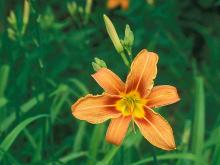
Species Types
Scientific Name
Hemerocallis fulva
Description
Native to Europe and Asia, orange day lily was widely planted by early settlers and has become widely naturalized in North America. The seeds don't mature in Missouri, so all the plants here are spread by root divisions.
Media

Species Types
Scientific Name
Lilium michiganense
Description
This native lily looks a lot like the Asian “tiger lily” that is commonly cultivated in gardens. Michigan lily, however, has leaves mostly in whorls and lacks the round “bulblets” that tiger lily forms in its leaf axils.
Media

Species Types
Scientific Name
Iris domestica (formerly Belamcanda chinensis)
Description
Blackberry lily has leaves like an iris, flowers like an Asian lily, and seeds that look like blackberries! Introduced as an ornamental, this self-seeding member of the iris family occurs on bluffs, roadsides, and old homesites.
Media
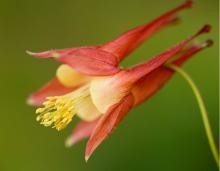
Species Types
Scientific Name
Aquilegia canadensis
Description
Native to much of eastern North America, eastern red columbine's range almost matches the breeding territory of the ruby-throated hummingbird, its number-one pollinator. Its bloom time matches the hummingbird's northward migration, too.
Media

Species Types
Scientific Name
Silene regia
Description
A spectacular plant of the tallgrass prairie, royal catchfly is threatened by habitat destruction and degradation throughout its range. Missouri has most of the world's populations of this noble plant.
Media

Species Types
Scientific Name
Rudbeckia triloba
Description
Brown-eyed Susan is a bushy perennial with much-branching stems and plenty of flowerheads. Compared to Missouri’s other Rudbeckia species, its flowerheads are the smallest, growing to only about one inch across.
Media
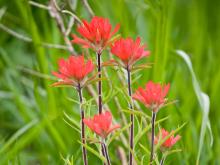
Species Types
Scientific Name
Castilleja coccinea
Description
The bright red of Indian paintbrush colors our native prairielands, reminding us (through its name) of the Osage, Kansa, Pawnee, and many other people who lived in these prairies before the pioneers.
See Also
About Wildflowers, Grasses and Other Nonwoody Plants in Missouri
A very simple way of thinking about the green world is to divide the vascular plants into two groups: woody and nonwoody (or herbaceous). But this is an artificial division; many plant families include some species that are woody and some that are not. The diversity of nonwoody vascular plants is staggering! Think of all the ferns, grasses, sedges, lilies, peas, sunflowers, nightshades, milkweeds, mustards, mints, and mallows — weeds and wildflowers — and many more!





















